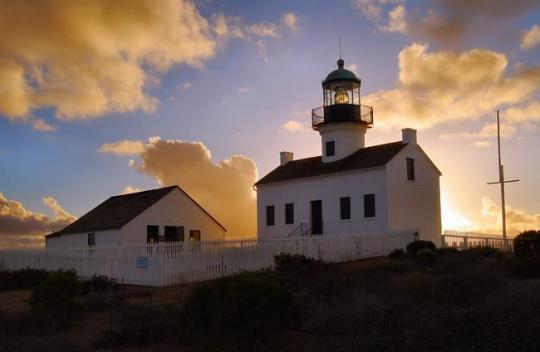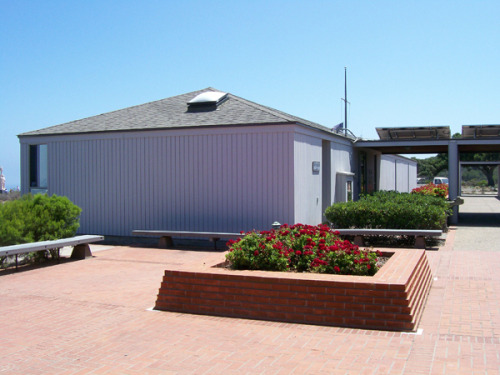#nps history
Landscape Design at Cabrillo National Monument
San Diego, California
Cabrillo National Monument was established in 1913 to commemorate explorer Juan Rodriguez Cabrillo, who led a European expedition to the west coast of what is now the United States. A statue of Cabrillo gazes out over the San Diego Bay, where his sails arrived ashore on September 28, 1542.
The historic importance of Cabrillo National Monument is associated with multiple resources and periods of time.
Before it became part of the National Park System, it was part of Fort Rosecrans, the headquarters of the WWII harbor defenses of San Diego. Several lighthouses have shone from this shoreline location, aiding navigation and attracting visitors.

Point Loma Lighthouse at sunset (NPS Photo).
More recently, the Cabrillo National Monument Visitor Center Historic District landscape is associated with the modern design principles of the NPS Mission 66 program.
Mission 66
Mission 66 was a period of profoundly new design ideas in national parks, expressed through a system-wide program of development. In response to the increasing crowds and automobile traffic of the 1950s, and in preparation for the 50th anniversary of the NPS in 1966, the agency embarked on a plan to overhaul park facilities with an emphasis on improving roads and parking, visitor facilities, and administration, housing areas, and concessionaire areas.
The Cabrillo National Monument was one of the parks that would undergo extensive changes during Mission 66, a critical factor in the development of the site into a modern and fully accessible park. Between 1963 and 67, the Mission 66 master plan added a new entrance road, parking areas, and a Visitor Center with an interior courtyard and series of interconnected indoor and outdoor landscape spaces. It is an example of how Mission 66-era development used concepts associated with modernism in landscape architecture, expressed in a southern California coastal context.

Walkway to the Cabrillo statue at the Cabrillo National Monument Visitor Center Historic District landscape (NPS Photo).
More about the Cabrillo National Monument Visitor Center Historic District landscape
- Learn more in the Cultural Landscape Inventory report
- Explore the cultural and natural resources at Cabrillo National Monument
- Cultural Landscape Profile: Cabrillo National Monument Visitor Center Historic District
Read more about Mission 66
- How Mission 66 Shaped the Visitor Experience at National Parks (National Trust for Historic Preservation, 2/8/17)
- Mission 66 Visitor Centers: The History of a Building Type(Sarah Allaback, U.S. Department of the Interior, 2000) - online book
- Mission 66: Modernism and the National Park Dilemma (Ethan Carr, University of Massachusetts Press in association with Library of American Landscape History, 2007)
Post link



